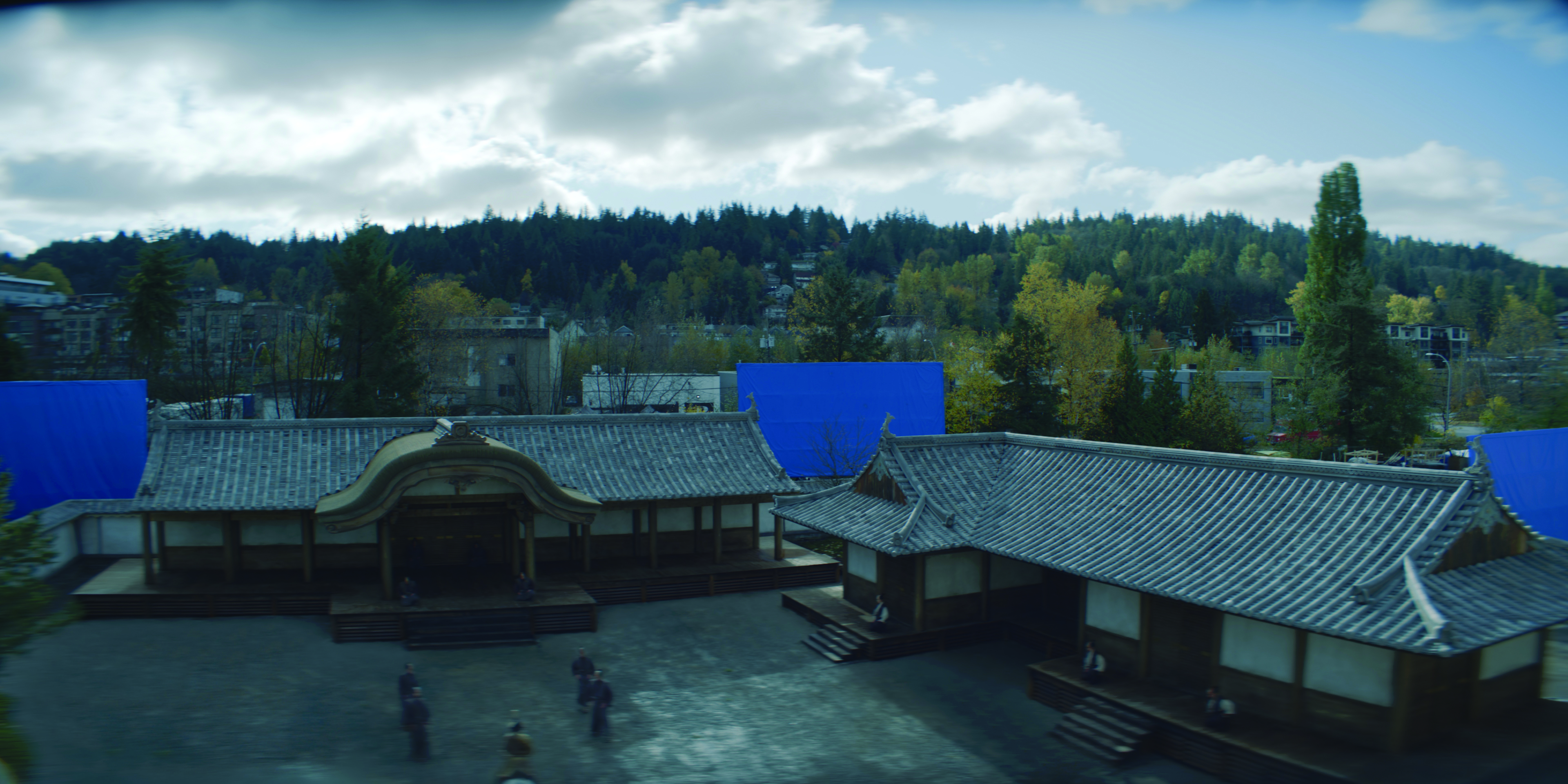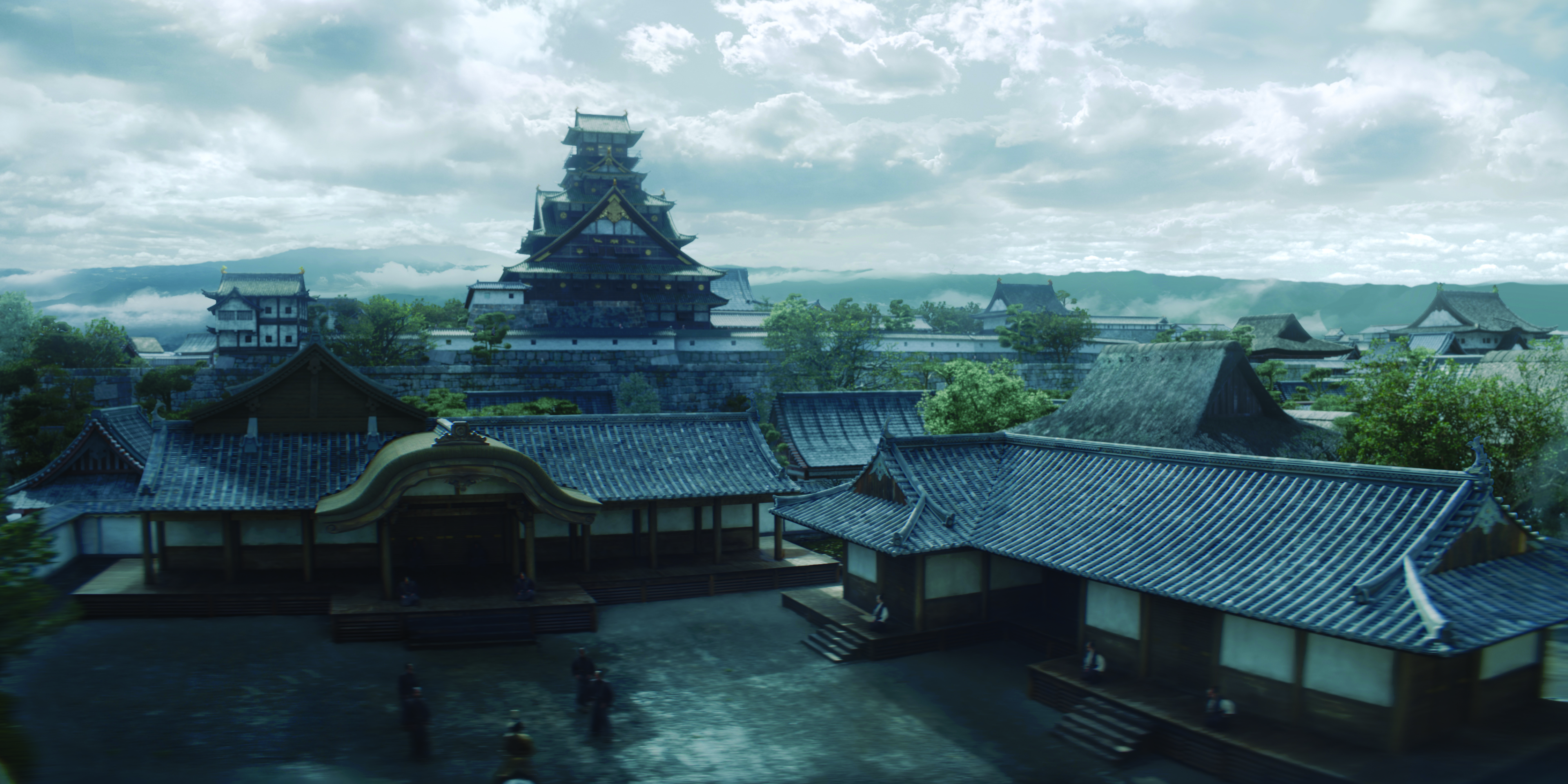Building a Feudal World: The VFX behind Shogun
Recreating Sengoku Period Japan for the FX adaptation of the acclaimed James Clavell novel.

Set in Japan in the year 1600, Lord Yoshii Toranaga is fighting for his life as his enemies on the Council of Regents unite against him, when a mysterious European ship is found marooned in a nearby fishing village.
Balancing the need to be authentic and cinematic while respectful of the audiences’ expectations is the perpetual struggle when depicting any historical events, and such was the case for the FX adaptation of the acclaimed James Clavell novel Shogun. (If you're kickstarting your VFX career, check out our guide to the best monitors for graphic artists and our picks of the must-have resources for VFX artists).

“Most of what we'd consider to be samurai stories of today usually took place within the Edo period,” states Justin Marks, the series' creator, executive producer and showrunner. “Our story is set in 1600, which was the Sengoku period [also known as the Warring States period], which occurred before [shogun] Tokugawa Ieyasu won the Battle of Sekigahara, took over Japan, and created 260 years of peace.”
The initial plan was to shoot the 10 episodes for the limited series in Japan, before it ultimately took place in Canada. Marks recalls: “We wanted to be there, but then this pandemic happened and we had to make other plans. Initially, I didn’t understand the potential of using Vancouver as a location because of my understanding of what Japan looked like, but it was amazing when you started to bring Japanese cast and crew out that they'd stand on the coast, look at the bay and say, ‘It's amazing how much it feels like home.’”



Even with the pristine natural locations, digital augmentation was required to transport viewers to the Sengoku period, resulting in 2,900 VFX shots. “The most challenging aspect, both creatively and technically, was the creation of cities that had to look amazing, but also honoured the historical aspect,” notes Michael Cliett, the visual effects supervisor and visual effects producer. “It wasn’t like throwing the castle or Osaka together. It was studying numerous historical maps and then creating the city from them. We found a maquette from 1597 and created the castle based off that."
We created a map in the visual effects department where we identified the location of every beat of the story, whether that be Osaka or Edo
Michael Cliett
“Also, we created a map in the visual effects department where we identified the location of every beat of the story, whether that be Osaka or Edo. It was so that it would make sense to ourselves where all the events were going to happen. What was the travel time between the castle and prison? And what would the views be?We identified the areas of ancient Osaka where they actually built the temples. The samurai district, which is the rich area, is right next to the castle, while the peasants and lower caste were closer to the water. All of that was taken into account.”
The sets created for the show needed to be multipurpose. “Our interior sets were all connected,” explains production designer Helen Jarvis. “I created several rooms with different vistas, with an idea of changing out the wall panel designs and the gardens, as it was imperative that all of the interiors open onto an outdoor space, as there was no other way of lighting the set."
Daily design news, reviews, how-tos and more, as picked by the editors.

“There wasn’t any overhead lighting or lamp shades. It was all lit from the exterior; you’ve got sunlight coming in as atmospheric lighting. I didn’t know exactly the blocking. I had to read ahead and consult with Justin, who was the keeper of the crystal ball, to say, ‘This is what I think I could do to create a Noh theatre.’”
The anamorphic lensing had an impact on the set design. “You could see the floor and the ceiling at the same time,” Jarvis adds. “We had to create interest in the ceiling, so I had various ceilings that popped up and new ceilings that came in. Because the lighting was generally soft, we didn’t have big Klieg lights. The nice thing too about the Japanese interiors is that there’s hardly any furniture, so you get these interesting vistas with the anamorphic lens where the architecture is the image.”



Drone shots generally elicit the contempt of Marks. “I don’t believe them,” he states. “I know there’s something floating up there in the sky and I can see it physically getting the shot, but it takes me dramatically out of the world. Maybe it’s because I’m classicist at best, so a helicopter feels more old fashioned, but it’s not like they had helicopters in 1600 Japan."
The most challenging aspect was creating cities that had to look amazing, but also honoured the historical aspect
Michael Cliett
“Michael Cliett had to work hard when we were doing these drone plates that you'd be building off to try to physicalise them in some way, so it would feel as if it had some weight to the movement. Often that meant adding artificial shake on these pure shots of flying over Osaka to say, ‘Give me a little bit of the camera operator coughed or a little something that we would believe.’ It’s a completely virtual shot, but it’s important to the eye to feel like mistakes are being made if you’re going to believe that the world is actually there.”
Some moments were meant to be a heightened reality. Marks adds: “The opening shot Michael constructed entirely was meant simultaneously to have a dream of a dream feeling of something coming out of the mist, but also this ghost story. It was supposed to feel as if you could hear the creaking of the fasteners of John Blackthorne’s ship, the Erasmus, like the belly of the beast in some way. And part of that was to give the story a supernatural feel so that it felt more than reality.”

Swords and arrows were essential weaponry. “Fortunately, there was only one type of arrow that the Japanese used and we built some good models of that,” states Cliett. “There’s a scene in Episode 105 where a drunken Toda Buntaro, Mariko’s husband, wants to prove to Blackthorne what a great archer he is, so what he does is take an arrow and fires it directly past Mariko’s face. We did that shot in slow motion with a Phantom [camera] and shot her face with the airgun so her hair gets a little bit ruffled from the arrow passing by the bridge of her nose. That’s a full CG arrow.”
The tips of arrows are set on fire during an ambush sequence. “When the arrows go, the flames almost go out,” Cliett explains. “It dims down a lot and gets a lot smaller because of the wind as the arrow is travelling through the air. Then when they'd hit a tree or impacted with a person there would be a flare up or explosion before the fire came back down."


“That was a simulation we ran through several times before we did something that we liked, and there were variations of it, but that’s the simulation Barnstorm VFX used to make the fire appear real on those arrows. It was more important when the fire was moving on the arrows to get the simulation right. It wasn’t so important in some of those wider shots where you can see spot fires in the background. Those were practical elements.”
Ships were complex set pieces for the art department to physically construct. “We could only build the top deck of a galleon and part of the below deck,” reveals Jarvis. “That was something we jumped on early before I even had anybody fully on the staff, I had one guy who's brilliant at all things naval modelling. He modelled that over about six months and built it. That was complex, but in a way it wasn’t as we had some good reference material, paintings and scrolls. We knew right away that we weren’t going to mimic exactly any of these particular ships. We had to custom design our ships for our potential blocking needs."


“Some of the exteriors, like in one episode we’re approaching the city of Edo and going through marshland, we chose a vast open field that seemed appropriate. It was a nice open space. We built a road in it and I didn’t have enough resources to create partially built buildings. This is where I could create four vignettes – four little clusters of houses being built – and then Michael Cliett would populate the rest of it."
What I loved about working with Michael [cliett] is that his proposal would often be, ‘You don’t need it. Let’s go in from here to there
Justin Marks
“That was complex because the director had a hard time getting his head around it. I said, ‘I’ll do what I can, but I can only do this amount of scenery.’ That was where I felt more comfortable, because I had lots of scenery around me; it felt good.”
Last-minute rewrites meant that adjustments had to be made at a moment’s notice. “Michael always had to keep stuff preserved and be able to work on a swivel in order to accommodate for that,” Marks says. “In the case of Episode 106, it meant shots that weren't supposed to be establishing shots needed to become establishing shots. How do we postage stamp those moments into a wider shot and come down into them? How do we follow the rhythm of the cut? It’s the thing I love."
“There’s always the joke about the writer: you give a writer the ability to write and all they’re ever going to propose are more words for a problem. What I find with some visual effects producers is that they’re always going to propose more shots. But what I loved about working with Michael is that his proposal would often be, ‘You don’t need it. Let’s go in from here to there. You have your moment and feeling.’ To be able to bring him into the cut as a collaborator working outside of his lane was invaluable.”

This interview originally appeared in 3D World magazine, the world's leading digital art, CG and VFX magazine. 3D World is on sale in the UK, Europe, United States, Canada, Australia and more. Limited numbers of 3D World print editions are available for delivery from our online store (the shipping costs are included in all prices).

Trevor Hogg is a freelance video editor and journalist, who has written for a number of titles including 3D World, VFX Voice, Animation Magazine and British Cinematographer. An expert in visual effects, he regularly goes behind the scenes of the latest Hollywood blockbusters to reveal how they are put together.
